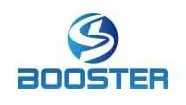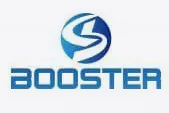Do Massage Guns Work? The Science Behind Recovery Tools
Self-massage guns and vibrating massage tools have become a staple in the fitness world. Athletes, trainers, and fitness enthusiasts swear by their ability to reduce muscle soreness, improve flexibility, and speed up recovery. But do massage guns actually work, or is it just clever marketing? Let’s dive into the science and find out.
Do Massage Guns Actually Work? The Science Explained
Scientific research on massage guns and vibration therapy is still evolving, but several studies suggest they can be effective. Vibration therapy has been shown to:
-
Increase blood flow to muscles.
-
Improve joint range of motion.
-
Reduce delayed onset muscle soreness (DOMS) after exercise.
While the evidence isn’t conclusive, these benefits make massage guns a worthwhile addition to your recovery routine.
How Do Massage Guns Help with Recovery?
Recovery is crucial for muscle growth and performance. After intense workouts, muscles experience micro-tears, leading to soreness and inflammation. Massage guns may help by:
-
Reducing Muscle Soreness: Studies show that vibration therapy significantly decreases muscle pain 24 to 72 hours post-exercise.
-
Improving Flexibility: Massage guns can enhance joint range of motion and flexibility, reducing the risk of injury.
-
Enhancing Blood Flow: The vibration and pressure from massage guns may help flush out waste products and deliver nutrients to muscles, speeding up recovery.
The Impact of Massage Guns on Muscle Soreness and Range of Motion
Research overwhelmingly supports the use of massage guns for reducing muscle soreness and improving flexibility. For example:
-
A meta-analysis of 10 studies found that vibration therapy significantly reduced muscle pain at 24, 48, and 72 hours after exercise (Lu et al., 2019).
-
Another study showed that vibration therapy improved ankle range of motion and hamstring flexibility, lowering the risk of injuries (de Benito et al., 2019).
Do Massage Guns Reduce Muscle Damage?
Intense workouts cause muscle damage, releasing chemicals like creatine kinase (CK) into the bloodstream. Studies suggest that massage guns may help reduce these markers of muscle damage:
-
A meta-analysis found that CK levels were lower 24 and 48 hours post-exercise when vibration therapy was used (Lu et al., 2019).
-
However, some studies found no significant difference between massage guns and traditional recovery methods like stretching or massage (Fuller et al., 2015).
While the results are mixed, massage guns remain a convenient and cost-effective recovery tool.
Do Massage Guns Help with Strength Recovery?
The impact of massage guns on strength recovery is less clear. Some studies suggest they have no significant effect, while others show improved muscle strength 72 hours after exercise. For example:
-
One study found that eccentric strength decreased after using a massage gun (Fuller et al., 2015).
-
Another study reported increased quadriceps and hamstring strength 72 hours post-exercise with vibration therapy (Iodice et al., 2019).
Overall, the evidence is inconclusive, but massage guns may still offer psychological benefits by making you feel more recovered.
Our Top Picks for Massage Guns
If you’re ready to try a massage gun, here are our recommendations:
-
Best Overall: Booster Elite
-
7 speed settings, quiet, and effective.
-
-
Budget Option: Booster Pro Massage Gun
-
Affordable with 6 massage heads and 30 speed options.
-
-
Compact and portable: Booster Mini
-
A great entry-level option for beginners and travel.
-
Conclusion: Should You Use a Massage Gun?
While the science is still evolving, massage guns appear to be a useful tool for reducing muscle soreness, improving flexibility, and enhancing recovery. They may not work for everyone, but they’re a convenient and cost-effective option compared to professional massages.
At the very least, massage guns can provide a psychological boost, helping you feel more recovered and ready for your next workout. If you’re looking to optimize your recovery routine, a massage gun is worth considering.
References:
de Benito, A. M., Valldecabres, R., Ceca, D., Richards, J., Barrachina Igual, J., & Pablos, A. (2019). Effect of vibration vs non-vibration foam rolling techniques on flexibility, dynamic balance and perceived joint stability after fatigue. PeerJ, 7, e8000. https://doi.org/10.7717/peerj.8000
Fuller, J. T., Thomson, R. L., Howe, P. R. C., & Buckley, J. D. (2015). Vibration Therapy Is No More Effective Than the Standard Practice of Massage and Stretching for Promoting Recovery From Muscle Damage After Eccentric Exercise: Clinical Journal of Sport Medicine, 25(4), 332–337. https://doi.org/10.1097/JSM.0000000000000149
Imtiyaz, S., Veqar, Z., & Shareef, M. Y. (2014). To Compare the Effect of Vibration Therapy and Massage in Prevention of Delayed Onset Muscle Soreness (DOMS). JOURNAL OF CLINICAL AND DIAGNOSTIC RESEARCH. https://doi.org/10.7860/JCDR/2014/7294.3971
Iodice, P., Ripari, P., & Pezzulo, G. (2019). Local high-frequency vibration therapy following eccentric exercises reduces muscle soreness perception and posture alterations in elite athletes. European Journal of Applied Physiology, 119(2), 539–549. https://doi.org/10.1007/s00421-018-4026-5
Lu, X., Wang, Y., Lu, J., You, Y., Zhang, L., Zhu, D., & Yao, F. (2019). Does vibration benefit delayed-onset muscle soreness?: A meta-analysis and systematic review. Journal of International Medical Research, 47(1), 3–18. https://doi.org/10.1177/0300060518814999
Romero-Moraleda, B., González-García, J., Cuéllar-Rayo, Á., Balsalobre, C., Muñoz-García, D., & Morencos, E. (2019). Effects of Vibration and Non-Vibration Foam Rolling on Recovery after Exercise with Induced Muscle Damage. Journal of Sport Sciences and Medicine, 18.


